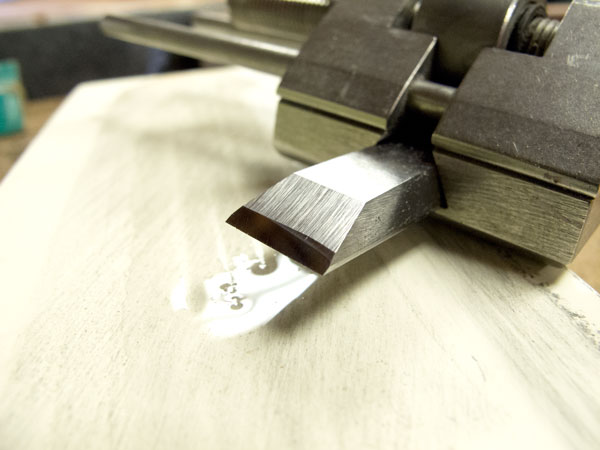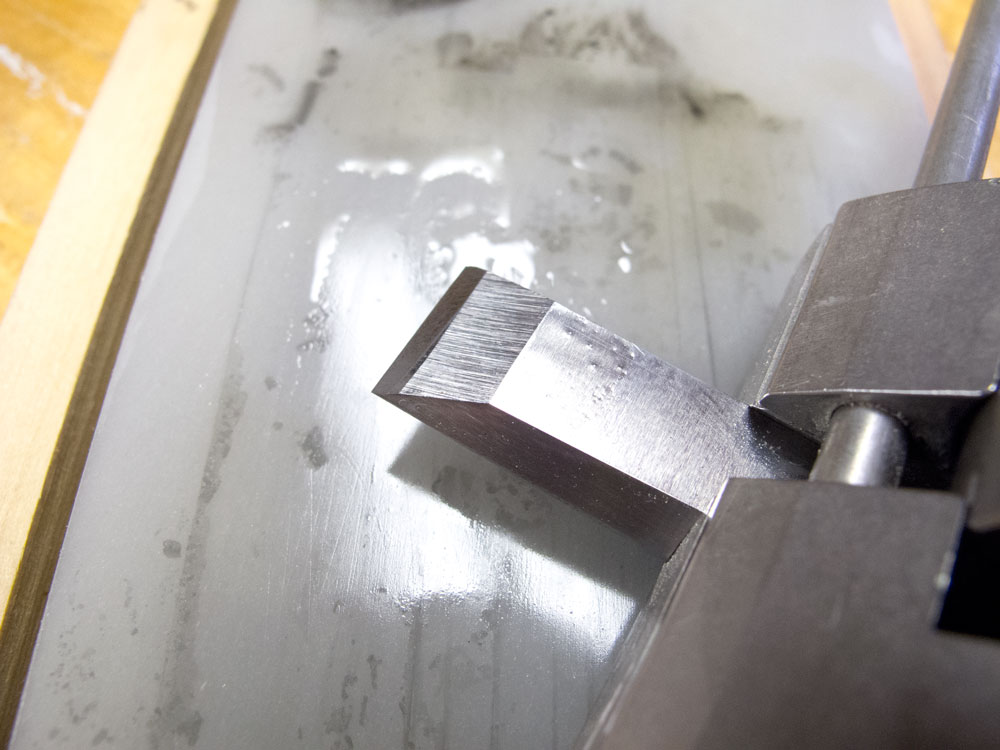We may receive a commission when you use our affiliate links. However, this does not impact our recommendations.
When I teach people to sharpen edge tools, I am very much an “I’m OK, you’re OK” guy about the kinds of systems out there and whether you should use jigs or not. But there is one thing I’m all fire and waterstones about: Stick with one system until you know it – at least 12 months.
I call it “sharpening monogamy.” I also practice “saw monogamy” and the regular kind of monogamy (sorry ladies!).
About a month ago I finally rendered my Shapton Pro 8,000 stone unusable. It had been dropped many times by me and students, re-glued together and flattened until it was wafer thin. Then I glued the bits onto some Corian. Now the stone is about as thin as a Dorito (and just as useful for sharpening).
It’s time for a new polishing stone.
That Shapton 8,000 stone was one of the first to enter the United States when Harrelson Stanley introduced Shapton to North America. It has served me well, and my gut reaction was to replace it with another Shapton 8,000.
But I have a wandering eye, I suppose. And so I have been trying out other polishing stones.
The Shapton Pro 8,000 was, frankly, my least favorite of my three Shapton Pros. I love the 1,000 and 5,000 Pro stones and can’t imagine working without them on the road. (I have a backup 1,000 Pro stone in the wrapper, if that tells you something.)
The 8,000 just didn’t seem to deliver a fast and complete polish.
So here’s what I did.
I bought a Shapton Pro 15,000 stone from Craftsman Studio (I don’t care for the Shapton GlassStones because they don’t have enough media – 5mm – for me). I’ve been fairly happy with this Pro stone. I think I like it better than the 8,000 stone, and it’s the same price as the 8,000 stone.
I started using my Dan’s Whetstone Translucent oilstone for polishing. It is coarser (in terms of microns) than my waterstones, but I have always loved the wicked edge it leaves. Somehow the micon measurement of the stone and its excellent, excellent results don’t match up.
I purchased an Ohishi 10,000 polishing stone from Lie-Nielsen Toolworks. When attending the Lie-Nielsen Hand Tool Events I use their stones, and I quite like this one. It cuts fast, though it is no fun to flatten. It tends to stick to my diamond plate unless I use running water during the flattening process.
I don’t have any conclusions to offer. And I don’t plan to buy any more stones to test. That would cut into my beer budget. But I’ll report back in about a year on which one I like.
— Christopher Schwarz
Here are some supplies and tools we find essential in our everyday work around the shop. We may receive a commission from sales referred by our links; however, we have carefully selected these products for their usefulness and quality.











“I started using my Dan’s Whetstone Translucent oilstone for polishing. It is coarser (in terms of microns) than my waterstones, but I have always loved the wicked edge it leaves. Somehow the micron measurement of the stone and its excellent, excellent results don’t match up.”
Yes, this.
I was at a LN Sharpening event at Brodies Timber in Dunkeld, Scotland in the spring of last year, presented by the good Mr Puchalski. He had in his possession a pre-production model of a new sharpening jig, not dissimilar to the one in use by Mr Shwarz in the photo above. The jig was a very neat item and was able to accept skewed blades by the replacement of one of the square side clamping walls with an angled item, this was held in place with screws and locating dowels. When questioned about the release date he said it would be sometime later in 2013. I too am eagerly awaiting the release of this new jig.
Hello.
I´d wish to let my thought if I may, There is something that seems to be ignored, this is: how much soaking the waterstones. I have been seeing people to be told they have to soak the waterstones for some given time, I have to say I have always used waterstones and the experience has taught me they have to be soaked as long as they ask for, I mean some of them (mostly coarser grits) needs more time to release though it sounds the opposite, coarser grits take up more water while finer grits only need it on their surface. This is what everybody knows more or less, but I suggest to soak stones according to any particular stone or brand. For example Naniwa stones only need to spray some water over them there is no need to soak them while King brand do need to be soaked for a while.
I have got the 10 000 Oishi waterstone as well, and it needs more water than the 3 000 Naniwa one which I have got too. I recommend to Mr Schwarz to keep his 10 000 stone into water for some minutes and try to dress it then on the diamond lapping plate, I am sure he will realize the difference.
All my best.
I just won a raffle and got a set of Shapton glass stones as part of the prize. I have used DMT machinists plates for about ten years, so an ready to try something new. I’ll still use the DMT for shaping and just use the Shaptons for the final polish.
I just noticed your honing guide looks different, it seems to be steel instead of aluminum. Is that something new or did I miss something along the way?
I use Norton’s set of water stones and have excellent results: 800, 1,000, 4,000 and 8,000 grits. I sometimes use the Veritas jig to aid accuracy but have a good sense of sharpening by freehand. I use the DMT diamond lapping plate to keep my stones flattened. When reconditioning steel from old bench/block plane finds, I use sand paper attached to a dead flat piece of granite. I always strop the edges of my tools at the end of the sharpening process.
Hey Chris, just a would you be able to give us a rough breakdown of the sharpening systems your students use?
I’m curious to see a rough idea of the split of adherents to water/oil/diamond stones, plus emery paper, and other methods.
I have been using an Ohishi 1000/8000 grit combo stone that I picked up from LN at the Port Townsend Wooden Festival last September and it has served me very well. I also think its a very good value for those who are looking for a good sharpening setup. Lie-Nielsen also sells the stone with a Basic Sharpening Kit, that comes with the combo stone, honing guide, Jojoba oil, 6″ ruler, and 150 grit sand paper. for $115.
I also have been patiently waiting for the release of the LN honing guide and their plow plane.
Serial monogamy. It happens.
I just don’t want to hear about you and some “new toys”.
New stone. New sharpening jig. Monogamy has ended indeed! You visit DC and now you think you can philander around with just any ole’ equipment like one of those political yahoos?
We’re watching you… ( -_-)
I know nothing.
Ok, is that the Lie-Nielsen sharpening jig in those photos? I notice it registers the back of the chisel instead of the beveled side. Beta-testing, huh?